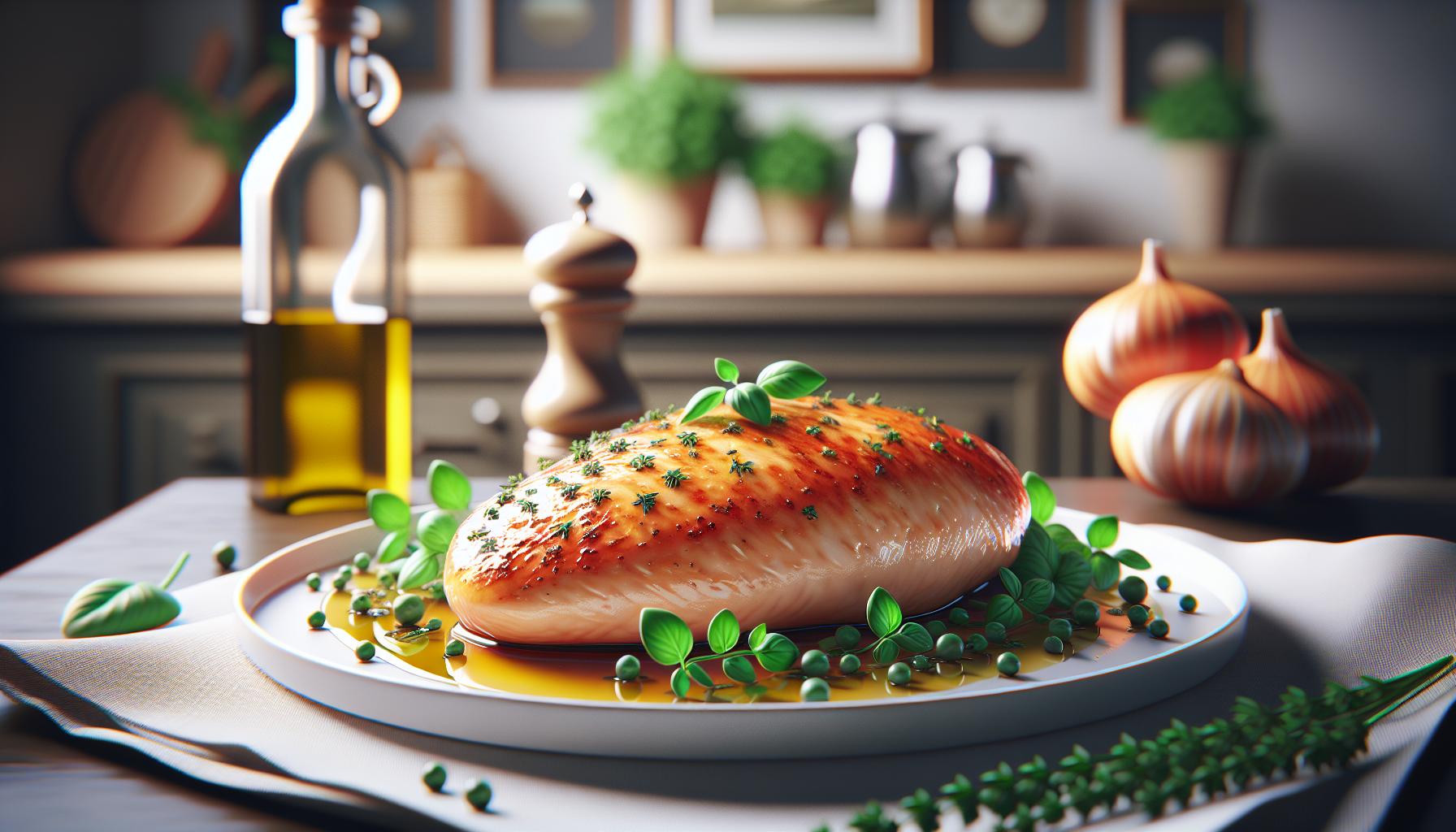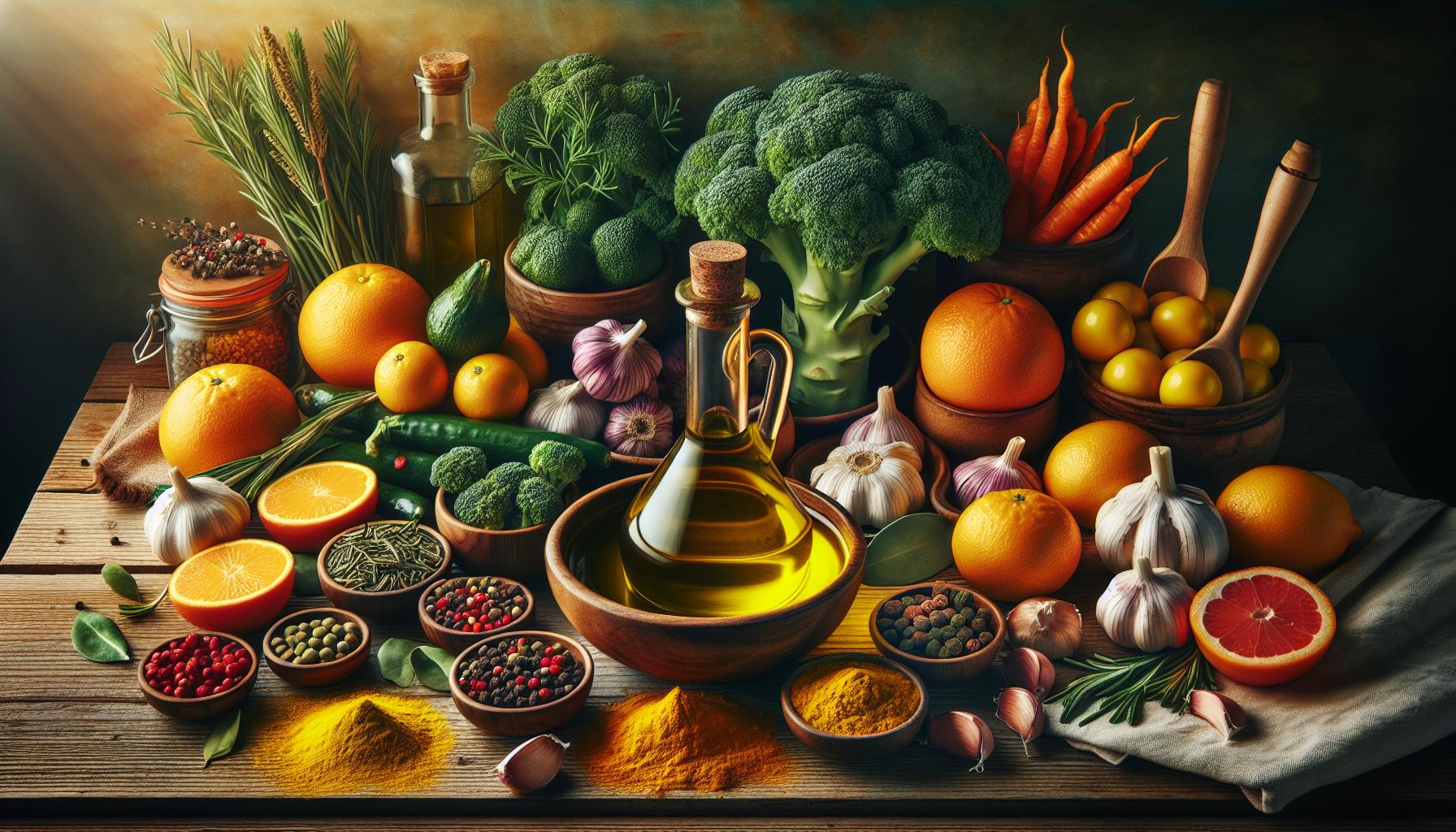Eating heart-healthy doesn’t mean sacrificing flavor or spending hours in the kitchen. Chicken breast recipes offer the perfect combination of lean protein and versatility while keeping those arteries happy and healthy. It’s time to transform this nutritious staple into mouth-watering meals that’ll make both your taste buds and your cardiologist smile.
From succulent grilled masterpieces to creative stovetop sensations these heart-smart chicken recipes prove that “healthy” and “delicious” belong in the same sentence. Each recipe packs a protein punch while keeping saturated fats low making them perfect for anyone looking to maintain cardiovascular health without living on bland boring meals. Whether you’re a seasoned chef or a kitchen newbie these recipes will revolutionize your approach to heart-healthy cooking.
Heart Healthy Chicken Breast Recipes
Chicken breast leads the way in heart-healthy protein options with its exceptional nutritional profile. This lean meat delivers essential nutrients while maintaining a low saturated fat content, making it an optimal choice for cardiovascular health.
Nutritional Benefits for Heart Health
Chicken breast contains essential nutrients that support cardiovascular function. A 3.5-ounce serving provides 165mg of potassium which helps regulate blood pressure. The meat contains 31g of high-quality protein along with B vitamins, particularly B6 which reduces homocysteine levels linked to heart disease. The selenium content in chicken breast acts as an antioxidant, protecting heart cells from damage.
| Nutrient | Amount per 3.5 oz serving |
|---|---|
| Protein | 31g |
| Total Fat | 3.6g |
| Saturated Fat | 1g |
| Potassium | 165mg |
| Selenium | 24mcg |
Low-Fat Protein Benefits
Chicken breast delivers complete protein while keeping fat content minimal. A single serving contains just 3.6g of total fat with only 1g of saturated fat. The protein content supports muscle maintenance without adding excessive calories to daily intake. This lean protein composition helps maintain healthy cholesterol levels by providing an alternative to higher-fat meat options like beef or pork. The combination of high protein and low fat creates an ideal macronutrient balance for heart health management.
Best Cooking Methods for Heart-Healthy Chicken

Heart-healthy chicken preparation relies on methods that maintain the meat’s natural nutrients while minimizing added fats. These techniques enhance flavor without compromising nutritional benefits.
Baking and Roasting
Baking chicken breast at 375°F (190°C) creates a tender result with minimal added fat. A light coating of olive oil mixed with herbs preserves moisture during cooking. The dry heat environment allows excess fat to drip away while maintaining the meat’s protein content. Placing chicken on a rack inside the baking pan improves air circulation ensuring even cooking. This method takes 25-30 minutes for boneless chicken breasts measuring 1-inch thick. Digital thermometers confirm doneness at 165°F (74°C) internal temperature.
Grilling and Broiling
Grilling chicken breast over medium-high heat (375-450°F) locks in natural juices. A 6-ounce chicken breast requires 5-6 minutes per side on a clean preheated grill. Broiling offers similar benefits placing the chicken 6 inches from the heat source. Both methods create appealing grill marks while allowing fat to drain away. Marinating chicken for 30 minutes in citrus juice or vinegar-based mixtures adds flavor without excess calories. These high-heat methods preserve the meat’s lean protein content while creating appealing caramelization.
Essential Ingredients for Heart-Healthy Seasonings

Heart-healthy seasonings transform plain chicken breast into flavorful meals without adding excessive sodium or unhealthy fats. These seasoning combinations enhance taste while supporting cardiovascular health through natural ingredients.
Herbs and Spices
Fresh herbs pack powerful antioxidants that benefit heart health while adding depth to chicken dishes. Rosemary contains active compounds that help reduce inflammation markers in the body. Thyme offers antimicrobial properties plus essential minerals including potassium magnesium. Garlic powder provides concentrated allicin which helps maintain healthy blood pressure levels. Additional heart-supporting spices include:
- Turmeric with anti-inflammatory curcumin
- Oregano rich in antioxidant compounds
- Basil containing heart-protective flavonoids
- Paprika offering vitamin A carotenoids
- Cayenne pepper promoting healthy circulation
Heart-Smart Marinades
Low-sodium marinades tenderize chicken while adding robust flavors through healthy ingredients. Here are key components for heart-healthy marinades:
| Base Ingredient | Health Benefit | Suggested Amount |
|---|---|---|
| Olive Oil | Heart-healthy fats | 2 tablespoons |
| Citrus Juice | Vitamin C antioxidants | ¼ cup |
| Apple Cider Vinegar | Blood sugar regulation | 2 tablespoons |
| Low-sodium soy sauce | Protein enhancement | 1 tablespoon |
- Lemon herb (lemon juice olive oil fresh herbs)
- Balsamic dijon (balsamic vinegar mustard garlic)
- Asian ginger (rice vinegar ginger low sodium soy sauce)
- Mediterranean (olive oil lemon oregano garlic)
Top Heart-Healthy Chicken Breast Recipes

These nutrient-rich chicken breast recipes combine fresh ingredients with heart-smart cooking techniques to create flavorful meals that support cardiovascular health.
Mediterranean Lemon Chicken
Mediterranean Lemon Chicken delivers a bright citrus flavor with minimal added fats. This dish combines 4 oz of lean chicken breast with fresh lemon juice, 2 tablespoons of olive oil, minced garlic cloves, oregano sprigs, and cherry tomatoes. Marinating the chicken for 30 minutes in citrus juice tenderizes the meat while infusing essential flavors. Cooking the chicken at 375°F for 25 minutes locks in moisture and creates a golden-brown exterior. Adding Mediterranean staples like Kalamata olives, red onions, and bell peppers provides heart-healthy antioxidants and fiber.
Herb-Crusted Baked Chicken
Herb-Crusted Baked Chicken creates a flavorful crust using fresh herbs and whole grain breadcrumbs. The coating mixture combines 1/2 cup of whole wheat panko, 2 tablespoons each of chopped rosemary, thyme, and parsley with 1 teaspoon of garlic powder. Dipping chicken breasts in egg whites before coating ensures the herbs stick while keeping fat content low. Baking at 400°F for 20 minutes produces a crispy exterior and juicy interior. Pairing with roasted vegetables or quinoa adds fiber and nutrients without excess calories.
Grilled Chicken With Fresh Vegetables
Grilled Chicken With Fresh Vegetables maximizes flavor through high-heat cooking and seasonal produce. Marinating chicken breasts in a mixture of balsamic vinegar, olive oil, basil leaves, and minced garlic for 2 hours enhances tenderness. Grilling over medium-high heat for 6 minutes per side creates appealing grill marks and caramelization. Accompanying vegetables like zucchini, bell peppers, and asparagus grill alongside the chicken, absorbing smoky flavors. This combination provides essential vitamins, minerals, and fiber while maintaining a low saturated fat content.
Tips for Keeping Chicken Recipes Heart-Healthy
Creating heart-healthy chicken recipes starts with making informed choices about ingredients and cooking methods. These practical tips focus on smart substitutions and portion control to maximize nutritional benefits while maintaining flavor.
Smart Substitutions
Greek yogurt replaces mayonnaise or sour cream in chicken salads, providing protein and calcium with less saturated fat. Whole grain breadcrumbs substitute refined options for crusted chicken dishes, adding fiber and nutrients. Fresh herbs enhance flavor without sodium, replacing salt-heavy seasonings. Olive oil takes the place of butter in marinades, offering heart-healthy monounsaturated fats. Plant-based milk alternatives work well in cream-based sauces, reducing saturated fat content. Pureed vegetables create moisture in chicken meatballs, eliminating the need for excess oils. Citrus juices add tang to marinades, replacing high-sodium condiments.
Portion Control Guidelines
A serving of chicken breast equals 3.5 ounces (100 grams), matching the size of a deck of cards. Measuring oils limits added fats to 1 tablespoon per serving when cooking. Fresh vegetables fill half the plate at 2 cups raw or 1 cup cooked. Whole grains complement chicken dishes at ½ cup per serving. Pre-portioning chicken into individual servings prevents overserving. Using smaller plates creates visual portion control through optical illusion. Meal prep containers with divided sections maintain balanced portions. Digital kitchen scales provide accurate measurements for consistent serving sizes.
Foundation for Creating Memorable Meals
Heart-healthy chicken breast recipes offer an ideal combination of nutrition convenience and flavor. These versatile dishes prove that maintaining cardiovascular health doesn’t require sacrificing taste or spending hours in the kitchen. By incorporating lean chicken breast with fresh herbs spices and heart-smart cooking techniques anyone can create delicious meals that support their heart health goals.
Whether it’s a Mediterranean-inspired dish or a simple herb-crusted creation these recipes make it easy to embrace a heart-healthy lifestyle. With the right cooking methods smart ingredient substitutions and proper portion control chicken breast becomes more than just a healthy protein source – it’s the foundation for creating memorable meals that nourish both body and soul.

